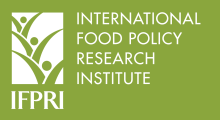Resource information
The impressive growth in aquaculture is now commonly dubbed a “blue revolution.” In some Asian countries, fish availability has increased at a faster rate in recent decades than did cereal availability during the Green Revolution. As an example, Bangladesh is one country where aquaculture has increased almost eightfold since the early 1990s. This growth has important implications for food and nutrition securities. Yet, there is little research on the determinants and impacts of this growth to document the lessons, identify evolving issues, and guide policy discussions. This paper attempts to fill that gap. Using several rounds of nationally representative household survey data, the authors conducted microsimulations to generate disaggregated estimates. The results show that, between 2000 and 2010, about 12 percent of Bangladesh’s overall poverty reduction can be attributed to aquaculture growth. In other words, of the 18 million Bangladeshis who escaped poverty during this period, more than 2 million of them managed to do so because of the growth in aquaculture. However, the results vary widely across income groups, with households in the third income quintile (which is not the poorest) benefiting the most. The implications of the results, methodological issues, and areas of future research are also discussed.


